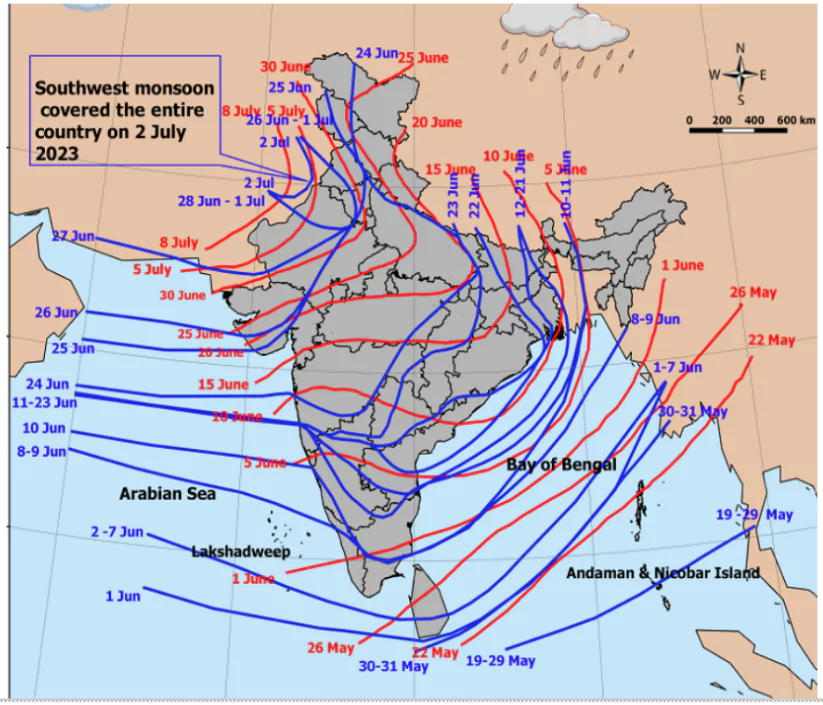![]() May 4, 2024
May 4, 2024
![]() 7124
7124
![]() 0
0
Summer in India varies in intensity across different regions, with northern areas experiencing scorching temperatures reaching up to 48°C, while southern parts benefit from milder weather due to coastal influences and higher altitudes. The onset of summer brings about significant changes in weather patterns, including shifts in surface pressure, wind directions, and the occurrence of local storms. Understanding these mechanisms is crucial for comprehending India’s diverse climatic conditions during the hot weather season.
 Deccan Plateau: The Deccan Plateau sees temperatures as high as 38°C in March, and in April, Gujarat and Madhya Pradesh can reach between 38°C and 43°C.
Deccan Plateau: The Deccan Plateau sees temperatures as high as 38°C in March, and in April, Gujarat and Madhya Pradesh can reach between 38°C and 43°C.
Some Famous Local Storms of Hot Weather Season
|
| Must Read | |
| Current Affairs | Editorial Analysis |
| Upsc Notes | Upsc Blogs |
| NCERT Notes | Free Main Answer Writing |
India’s summer season is characterized by a wide range of temperatures and weather phenomena, influenced by geographical factors such as location, altitude, and proximity to the ocean. From the oppressive heat of the northern plains to the milder conditions of the Western Ghats, each region experiences unique climatic conditions during this time. By studying the mechanisms driving these weather patterns, we gain valuable insights into how India’s diverse landscape shapes its seasonal climate.
| Related Articles | |
| Seasons of India All types, Comprehensive Study for UPSC 2024 | NORTH-EAST INSURGENCY |
| Temperature Distribution: Factors and Impact | India’s Monsoon Climate |
<div class="new-fform">
</div>

Latest Comments